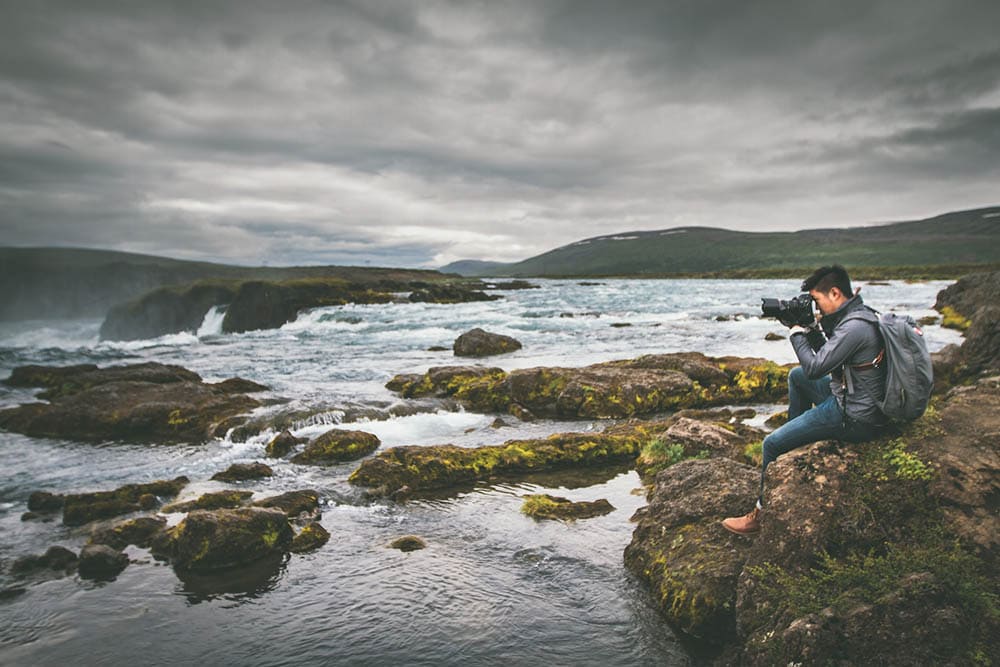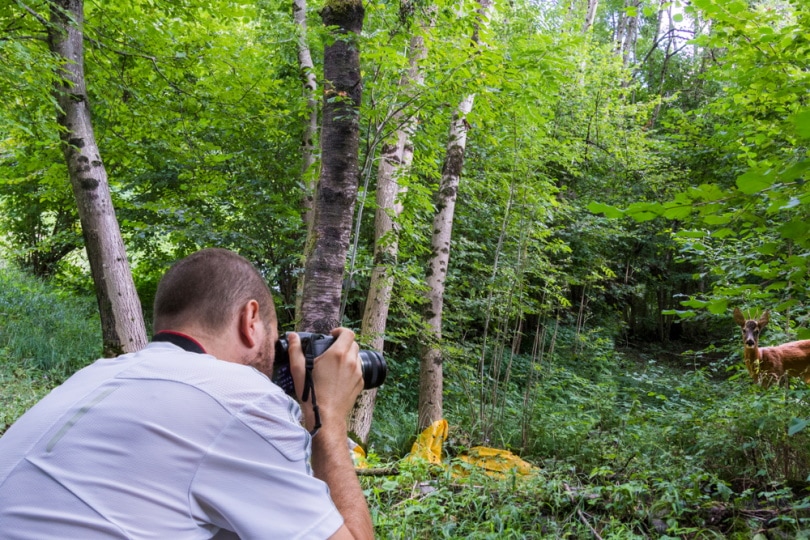How to Become a Nature Photographer – A Step-by-Step Guide
Last Updated on

Are you in your element when there is a camera in your hand and a wild animal within view? Do you long to see the world and document what you find? A nature photographer typically travels extensively, roaming the earth in search of rare animals and the perfect composition. If you think you’d like to try this independent, rewarding career, here are the steps you will need to take to get started.

How to Become a Nature Photographer – A Step-by-Step Guide
Before you take your first steps, here are some things to ponder:
1. Decide what type of nature photography you want to specialize in.

Are you wanting to capture wildlife in the Sahara Desert or the coyotes in your North American backyard? Knowing what niche you want to cover will allow you to get the best type of practice now.
2. Consider your career goals.
Are you strictly wanting to become a photographer, or would you like to become a photojournalist so you can write about the animals you find? In an increasingly digital world that’s downsizing its media roles, it’s beneficial to have multiple media skills that’ll qualify you for more jobs. However, writing is not for everyone, so if you hate to drag out the pen and paper then you might want to learn another relevant skill such as social media.
3. Go to school… if you want to.
Unlike some professions, there isn’t a required academic career pathway for a nature photographer. You don’t have to go to college or trade school to learn the skills you’ll need in the field, although higher education can help. If you want to go to college, consider majoring in a relevant area such as zoology, journalism, photography, or media.
4. Take a photography class.

At the very least, take a course in photography from a local college or even online. If you can find an apprenticeship, that’s even better. You just want to be sure you’re getting hands-on training along with the head knowledge of the camera.
5. Build a portfolio.
While you may not have the funds to go across the world yet, you can get started right now by finding relevant subjects to photograph. If you want to go to Africa, make a trip to your local zoo or national park and take pictures of the animals there. You can even ask if they need a volunteer photographer for their social media and start building your portfolio through that channel. You could stalk squirrels outside your own house or birds at a local park, which will boost your portfolio and help you learn about animals’ rhythms. Your pets might also be able to help you. Simply follow your dog around the house and look for a unique angle on how to document their ordinary day.
6. Don’t underestimate your subjects or gear.
Every photographer must learn the art of how to take an ordinary thing, such as a squirrel, and transform it into art. Never think you can’t become a nature photographer because your backyard is too small, or your equipment isn’t fancy enough. Your creativity and dedication will determine your work more than your resources.

Who Will Hire Me?
This is the tricky part with no clear answer that works every time. Obviously, in the best-case scenario, National Geographic notices your work and makes you an offer you can’t resist to join their team traveling around the world. However, we know that’s probably not going to happen… at least anytime soon. In the meantime, here are a few ways you can break in the business:
1. Work where you can grow.

Most nature journalists start as freelancers who work another job while they build their portfolio. Try to find a relevant position if you can, even if you’re the studio photographer at the mall. When you have time off, go take pictures of what you’re really interested in.
2. Enter nature contests.
Scour the internet for nature photography contests and enter as many as you can. Flickr regularly has contests, and you never know who’s monitoring the feed.
3. Query magazines for publication.
Get a copy of the newest Writer’s Market and start submitting to the nature journals that you find listed. It might take a while, but eventually someone’s going to bite.
4. Think local.

It’s easier to break into the bigger media groups if you’ve been published, even on a small scale. For example, maybe a regional magazine in Louisiana needs a nature photographer to take pictures of alligators for a local tour. While it may not pay much, it’ll give you credibility next time you pitch to another company.
5. Continue to invest.
Life gets busy and bills can stack up. Remember to set aside time to hone your craft, as well as money to continue to invest in better equipment. Take advantage of continued education, whether formally or through a seminar or even library books. Keep pressing forward, learning and practicing, and you’ll see your skills progress over time. And other people (like the editors of those magazines) will, too.

Conclusion
A career in nature photography will take patience to break in and more patience to succeed once you’re there. But think about how thrilling it’ll be one day. You’ll be laying in the grass before the sun has even risen, waiting to capture your subject’s first moments upon waking up. You’ll get to see parts of the world some people only dream about. Even if you don’t ever venture out of your state, a career in nature photography will help you see your corner of the world in a different light and inspire others to appreciate the wonders around you.
Featured Image Credit: Andrew Ly, Unsplash
About the Author Brooke Bundy
Brooke Bundy is a freelance writer who lives with three cats and a dog. She attended the University of North Georgia where she acquired a B.S. in Media Studies. Booke loves storytelling and spending time with her pets at their house in New Orleans, Louisiana. In her free time, she enjoys gardening, cooking, and brewing coffee.
Related Articles:
How to Collimate Binoculars: 9 Expert Tips
How to Clean a Refractor Telescope: Step-by-Step Guide
How to Clean a Telescope Eyepiece: Step-by-Step Guide
How to Clean a Rifle Scope: 8 Expert Tips
Can You Use Binoculars to Look At Stars? How to Choose the Right Pair
How to Choose Binoculars for Bird Watching: 10 Expert Tips
Monocular vs Telescope: Differences Explained (With Pictures)
What Is a Monocular Used For? 8 Common Functions
